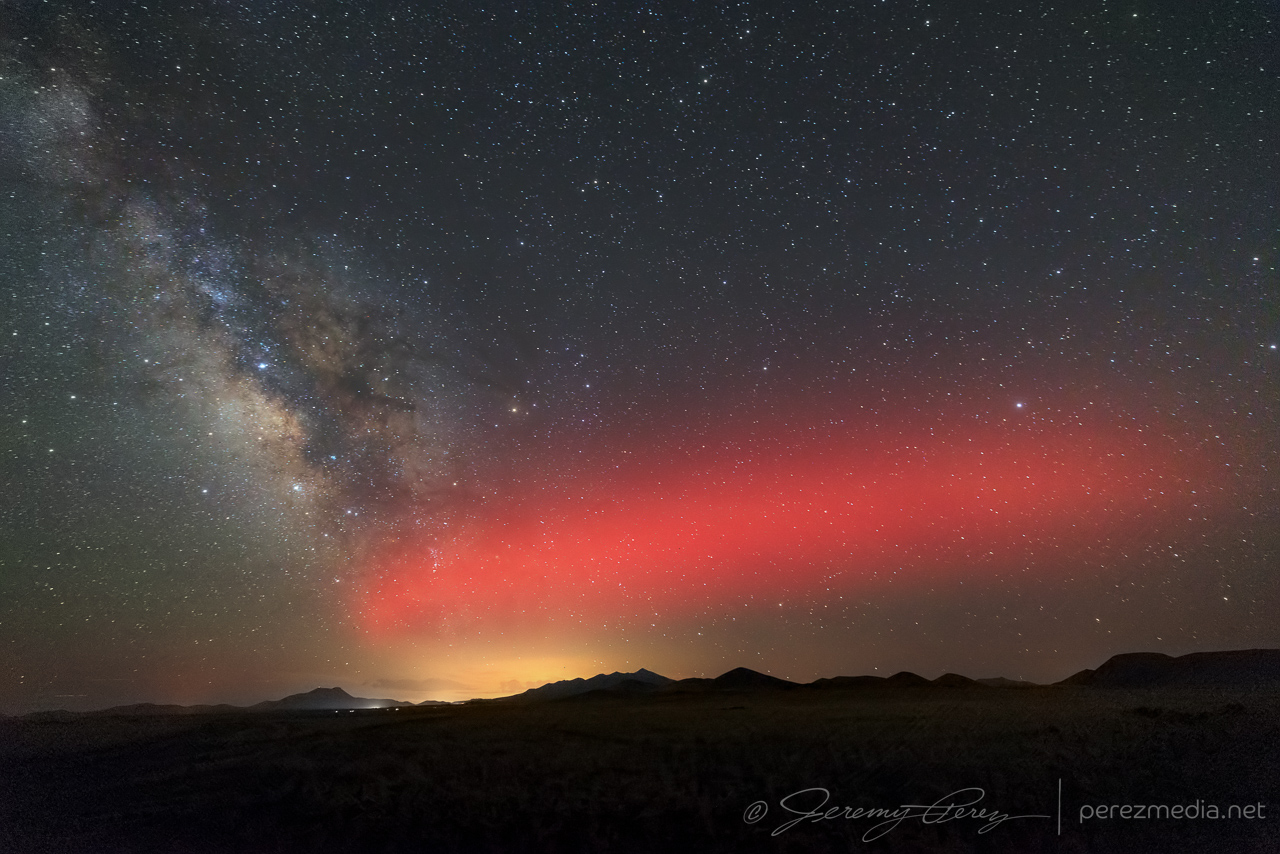In recent decades, scientists have discovered that rocket launches are capable of piercing the upper ionosphere, which leads to the formation of “ionospheric holes” that cause eerie red bands of light similar to the aurora borealis.

Multiple first stages of SpaceX rockets, returning after launch, create temporary “holes” in the upper atmosphere, causing the so-called “SpaceX auroras”. Scientists believe that these auroras do not threaten the environment or life on Earth, but may have unforeseen consequences in the long term.
Employees of the Texas Observatory noticed unique red lights appearing after the entry of Falcon 9 rockets into the atmosphere. They are the result of ionospheric holes that are punched by rocket boosters during their descent to Earth. According to astronomer Stephen Hummel, we observe 2–5 similar phenomena every month. These lights are very bright, they are easy to see even with the naked eye.
The spent fuel released by the boosters interacts with atmospheric gas molecules and excites them, causing red light radiation that “marks” a hole in the ionized layer. Although such holes are tightened in 10–20 minutes, they can affect astronomical research and shortwave radio communication, as well as interfere with GPS operation.
SpaceX auroras, like other light effects, are not a threat to life on Earth, but they are becoming the object of attention of astronomers and researchers, and their impact on the atmosphere is still under evaluation. Observing these auroras also helps to study the ionosphere — its dynamics and chemical compositional features.
Scientists note that with the increase in the number of SpaceX rocket launches, such light phenomena may become more common.
Earlier we reported how the Aurora shone over the dark spot of the Sun.
According to livescience.com
Follow us on Twitter to get the most interesting space news in time
https://twitter.com/ust_magazine


